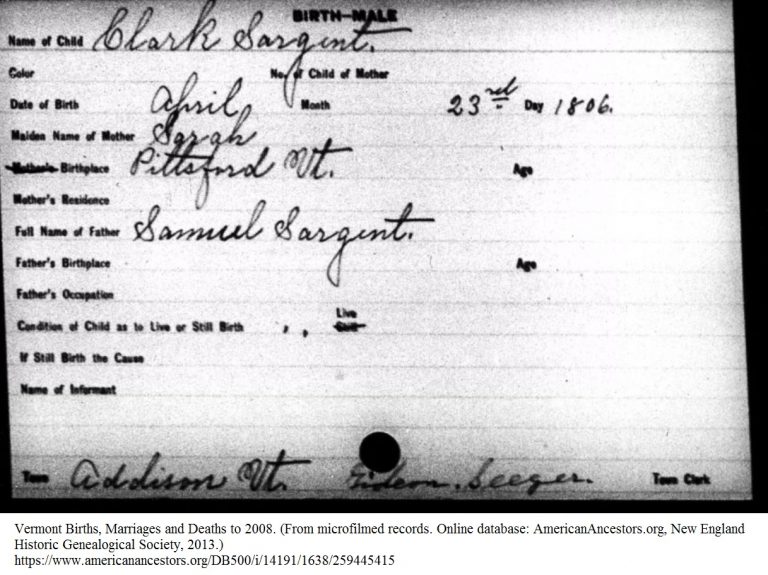My relative’s 1806 birth in Vermont was recorded twice in two different towns three years apart.

One of Clark Sargent’s two birth records in Vermont.
The date of birth was the same on both records–it was just recorded in two different Vermont locations. I should not just look at his birth record. I should also look at the records of his siblings. It turned out several of them were recorded twice in the same locations where his records were recorded.
If we look at just one record, we may miss clues or we may get a skewed perspective. It’s advised to look at all records in context. It is particularly important to do this with with any record with which we are not familiar or one that looks unusual. Sometimes when this can be helpful is when using:
- church christening records–was your relative’s record similar to others or is there something different about it (other than the names and dates)?
- foreign language records–sometimes it can be easier to see what part of the entry is common to all and what is unique to each one–and that makes translating and transcribing easier
- census records–compare difficult to read handwriting with other entries where the names may be easier to figure out
- any record that you think is “off.”–do other records in the series have this same issue or not? You don’t know if you don’t look.
It’s all about context. Try and avoid looking at just one.








2 Responses
In Massachusetts, I have found marriage records recorded in the town where the groom lived and also in the town where the bride lived. If they were from different towns they were recorded in both places, sometimes with different or more complete information in one place or the other. Sometimes it is not easy or even possible to determine exactly where the marriage took place.
Yes, I am learning from ur genealogytipsoftheday how important it is to make sure one has several places to look 4 the information.